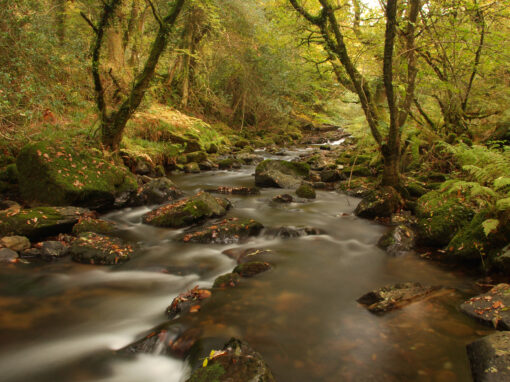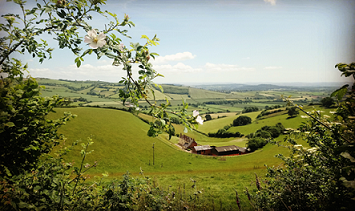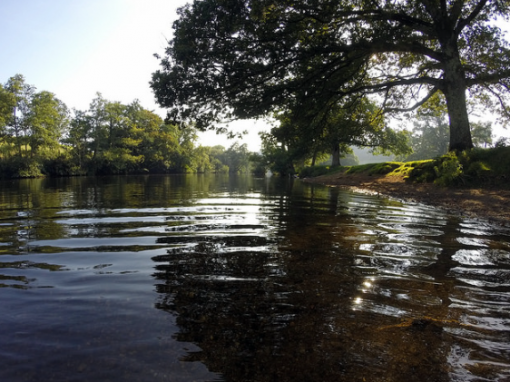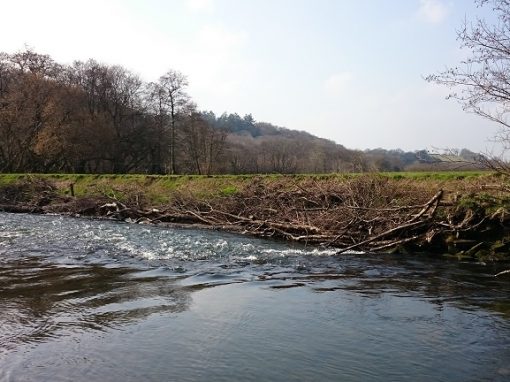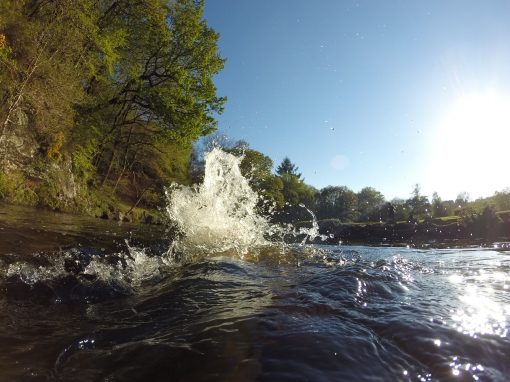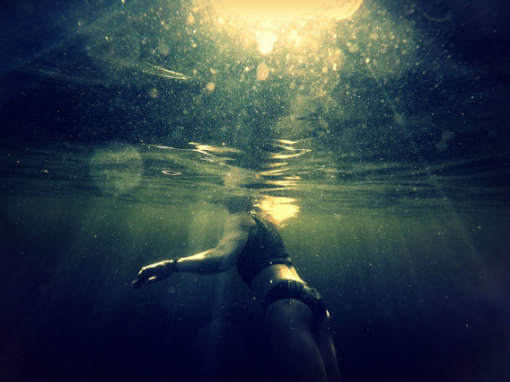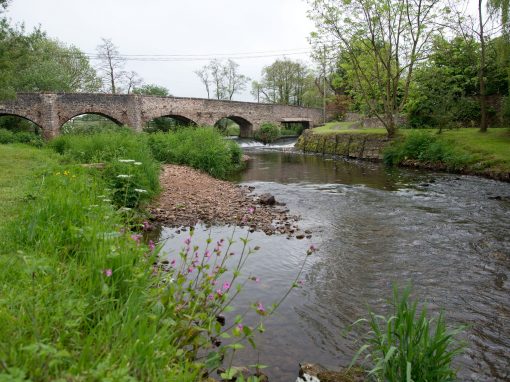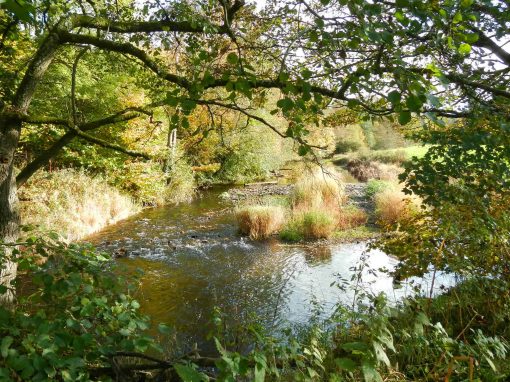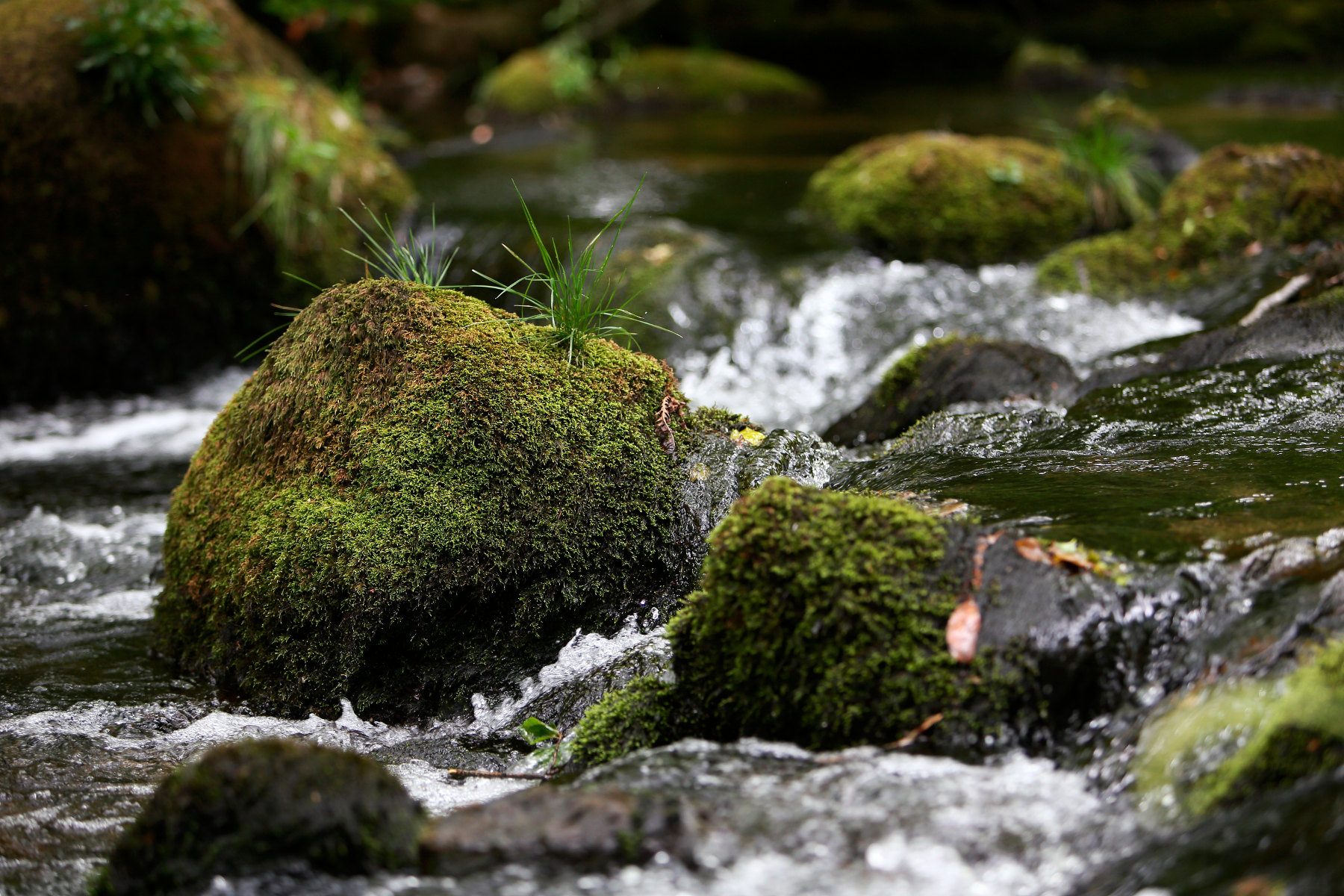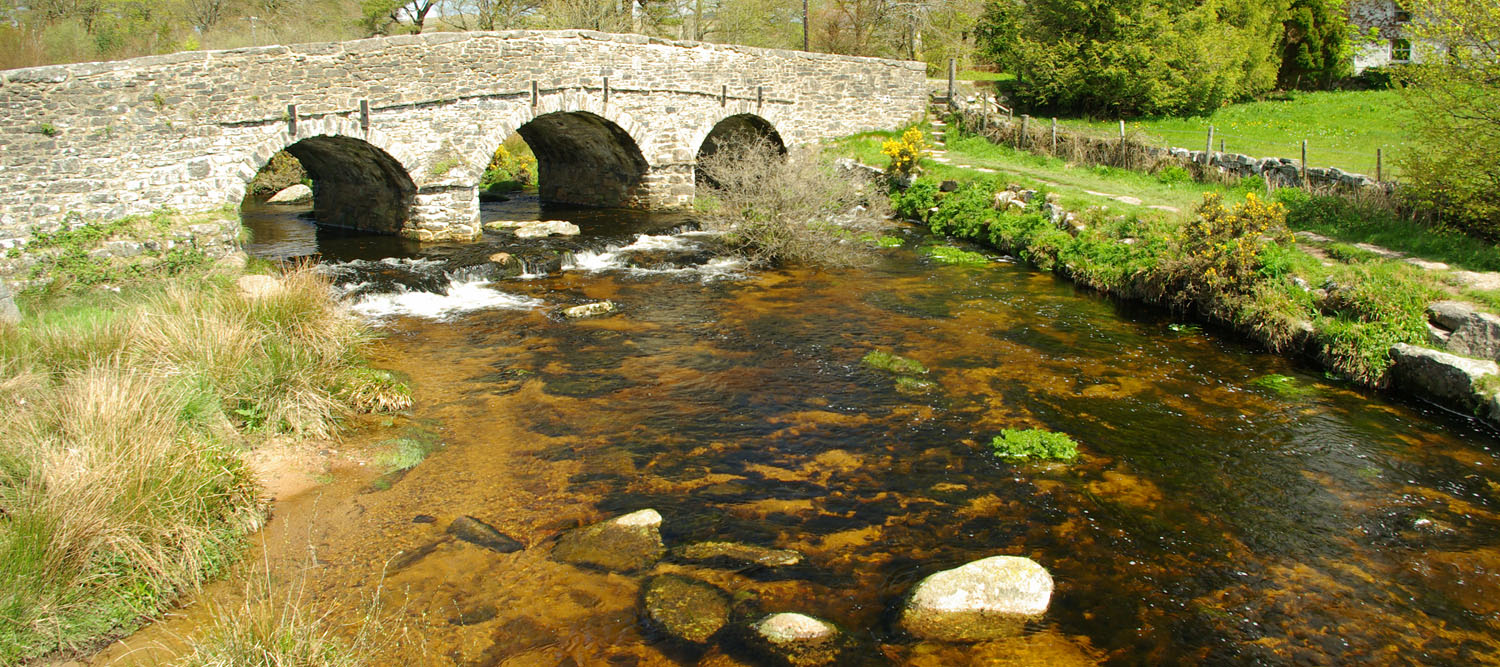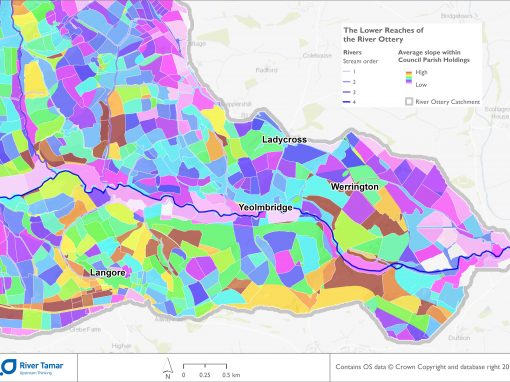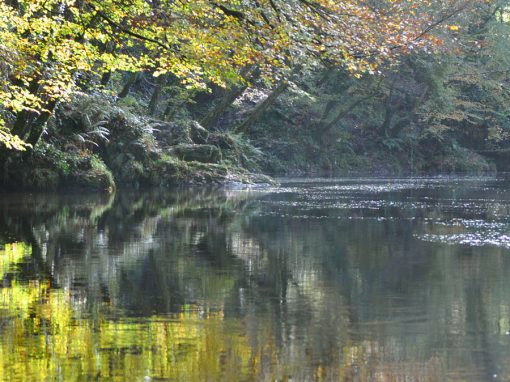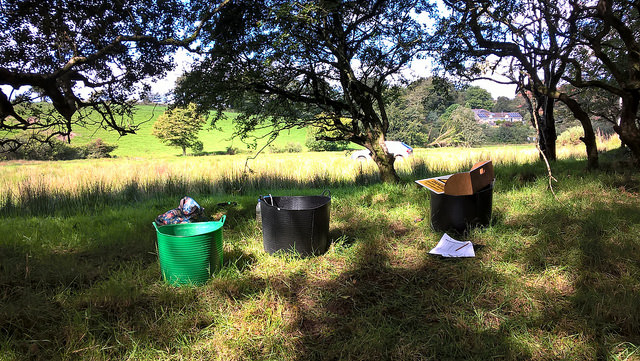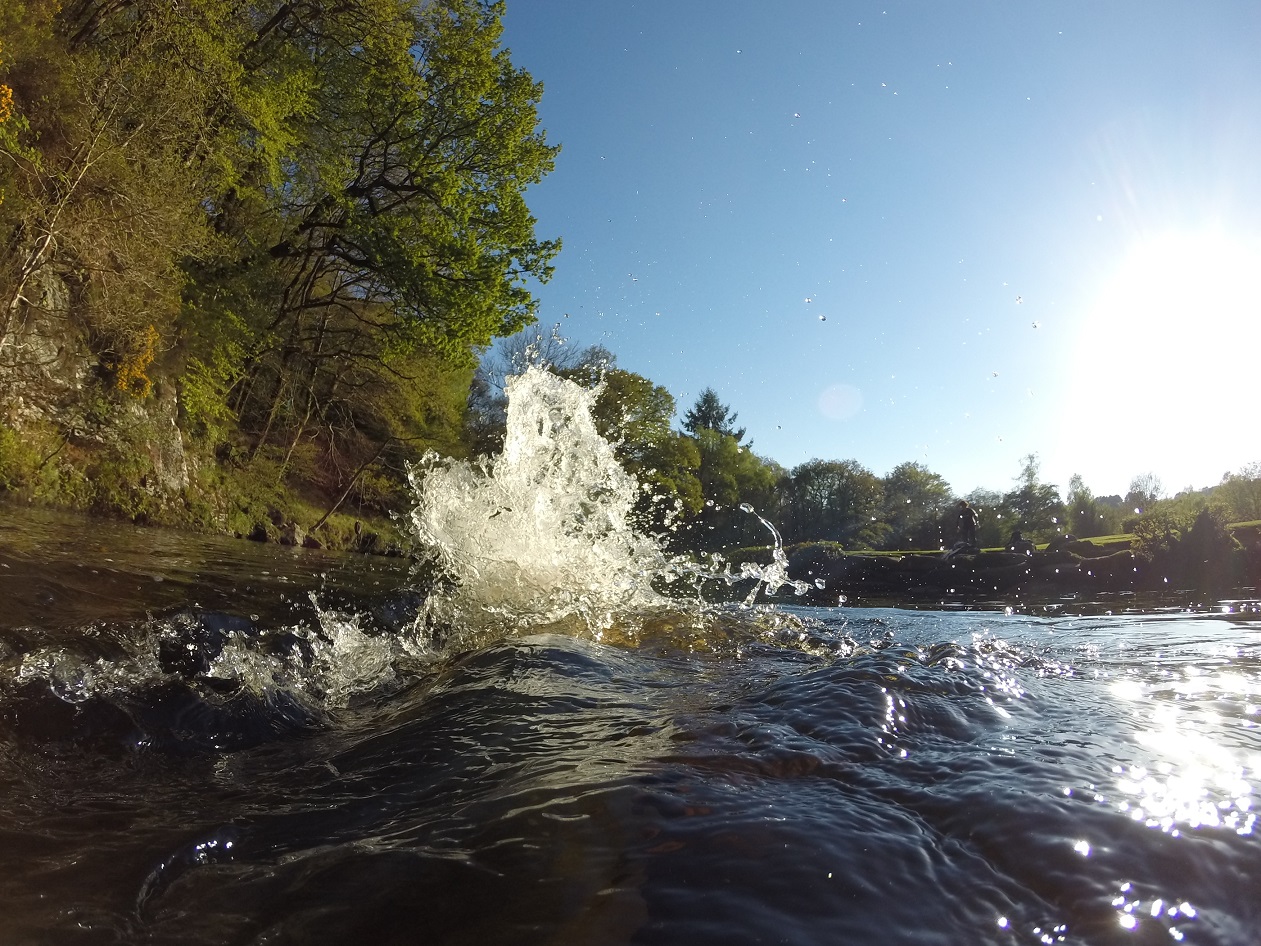–
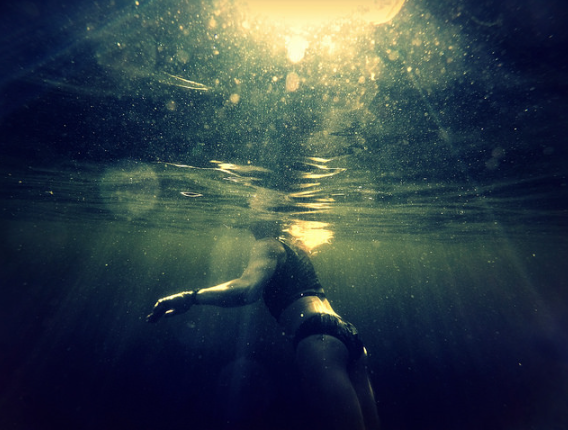
A River Story by Chris Popham
Image@ Chris Popham
Dip into the Dart
In the second of three river stories, we hear from wild swimmer Chris Popham as he recounts the beautiful scenery he has witnessed along the River Dart.
After the rivers converge at Dartmeet they are sometimes termed the Double Dart and from here the river tumbles joyfully through the steep sided oak woodlands over the rills at the Salmon Leaps, through the choke at Meltor Pool and down to Sharrah Pool. Sharrah has become a Mecca for open water swimmers, a place of pilgrimage for visitors, with perhaps only the Faerie Pools on the Isle of Skye engendering the same level of homage.
Find out more about the work of Westcountry Rivers Trust...
The river tumbles through the cascade and into the glittering bubble stream of the Sharrah Swoosh past the rock affectionately known as ‘The Elephant’. In the spring the river water turns zesty lime green heralding the unfurling of the first oak leaves which glow garish green against the bluest skies, but ducking down into the depths brings with it instant ice-cream head.
As the water warms, the trout return; they hang effortlessly in the current, unconcerned by swimmers waiting only for a morsel to be carried within reach or for an unwary insect to touch the surface whereupon it vanishes with a swirl and ‘pop’. It is at Sharrah that the Dartmoor granite gives way to different rocks and the geology of ancient sea beds.
On the open moor buzzards wing overhead on a summer day in a sky that epitomises blue and skylarks chitter and twitter. Herons stalk the shallows from moor to estuary and kingfishers are numerous but are rarely seen above New Bridge. In contrast for some years a cormorant was a summer visitor nearly as far upstream as Dartmeet.
The Trust is keen to promote access to our rivers in all shapes and forms as it strongly believes if you can’t access a river, you can’t enjoy it and if you can’t enjoy it, you are less likely to want to protect it. However, this should be with the permission of the landowner as there is no general legal right of access.
Activities at single points, like wild swimming, fishing or playing in the river, are a great way to experience this environment and, when done with landowner permission and in sympathy to nature (i.e. following the countryside code), are a great way to enjoy this amazing habitat. Where there are open access agreements (such as the moors) this is relatively straight forward but outside of open access land, and above the tidal limit, access to rivers needs landowner permission. If you are fishing you also require a rod license alongside the beat owner’s permission.
Access along the length of the river, whether canoeing or wild swimming, requires permission by the owners of each section. In places, there are agreements between several owners to allow access over longer sections and the Trust is keen to help negotiate and promote permissive access where possible and in-line with best environmental practice. Below the tidal limit there is open navigation rights into the marine environment so other than permission to use the slipways and portage points wider landowner permission is not needed.
Other Westcountry River Stories
